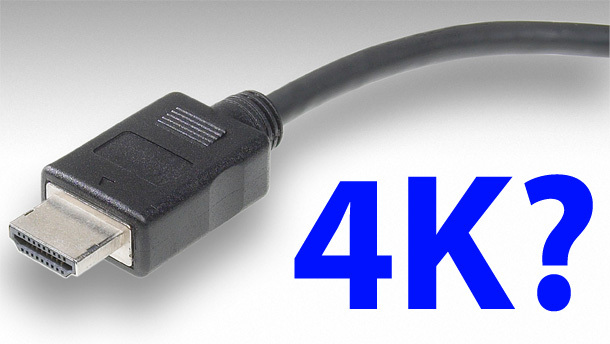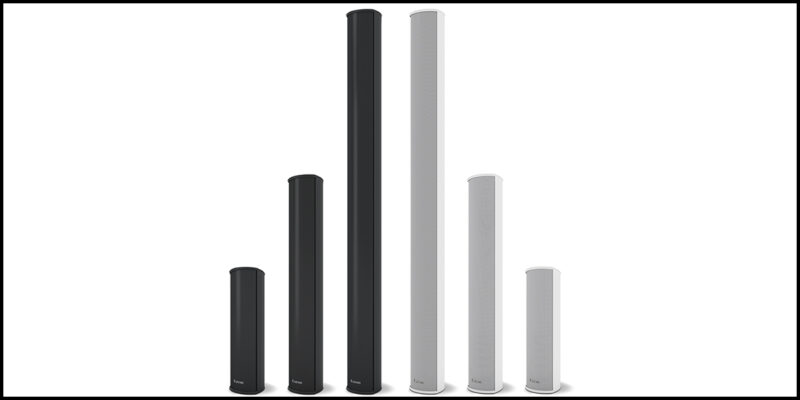The True4Konundrum
There are two pieces on rAVe Publications currently about Extron and their new “True4K” initiative. One is a blog by Gary Kayye that recaps why Extron has launched the initiative. The other is a Rants and Raves podcast where Gary talks to Casey Hall, VP of Sales and Marketing at Extron, about True4K and its purpose in the market.
You should read the blog and listen to the podcast as a good background to this conversation, especially if you want to understand why I felt compelled to write this in the first place.
I won’t get into arguing about the resolutions that are technically 4K. If anyone is confused by that, I put together a definitive guide last year to help everyone out.
 First off, kudos to Extron for actually talking about frame rate, bit depth, and chroma subsampling as a major part of 4K. Two of these made my list in 2013 as reasons 4K was not yet ready for prime time, and the other made my list last year of why 4K infrastructure was a major problem.
First off, kudos to Extron for actually talking about frame rate, bit depth, and chroma subsampling as a major part of 4K. Two of these made my list in 2013 as reasons 4K was not yet ready for prime time, and the other made my list last year of why 4K infrastructure was a major problem.
Secondly, Extron’s stated purpose of making sure AV system designers have all the info they need to do their jobs is a noble one at that. I also like their video data rate and timing calculator determining the amount of data the switches will need to pass at any given time. It’s a great resource for anyone designing high throughput systems.
One oversight in both of these pieces though is that they failed to talk about one major piece of the puzzle in 4K switching. Gary mentions that resolution, frame rate, color bit depth, and chroma subsampling are the four major pieces of data an engineer would need to correctly design a system. He is not wrong in that, but he fails to mention an equally important piece of this puzzle. Backplane.
(Note: There was in fact a separate blog on Extron and the 50Gbps backplane that was released as I was writing this blog. See it here. I was also made aware of some new information after writing this blog. I have included notes based on that in red below as well.)
Let’s first establish that a video switch and an ethernet switch tax a backplane differently. In most cases every port on an ethernet switch is not retrieving or sending data simultaneously. The data comes in bursts, and a gigabit switch can have 24 ports and a 16 Gbps backplane, and still function fine with little impact on the users. With video, the data is constant, so there is a major issue when the backplane hits capacity. Mr. Hall mentions backplane briefly in his conversation with Gary, but glosses over the 50 Gbps specification saying it can handle even some 8k streams. Technically he’s correct, but let’s dive deeper.
If you look at the True4K specification for the XTP II switcher, you will see a few things. First you will notice it supports resolutions up to 4096x2160p (that is actually 4K BTW), with frame rates up to 60 fps, color bit depth support up to 16 bits per color or 48 bits total, and full chroma sub sampling of 4:4:4.
Run this set of figures through the calculator above and voila! You see that this piece of video runs at 35.64 Gbps. If you look at the max effective data rate, it goes up to 37.5 Gbps so all seems well right? Wrong.
The backplane throughput on this “switcher” is 50 Gbps. What does that mean?
It would seem to imply that the max amount of traffic that can be routed through this switch at one time is 50 Gbps. My question is, how many of these streams can run through this switch at any given time? Some simple math says…one, that is if the term backplane applies to the Extron XTP switch in the same way it would an ethernet switch.
This is where my knowledge of data in the IT space actually steered me wrong. Extron’s 50Gbps backplane is per port, it is not the same as the backplane in an ethernet switch that has to be shared across all ports on the switch. It is a clear indicator that as AV and IT cross pollinate, that we need to use the terms in the same way to communicate properly.
Casey Hall at Extron was very gracious in calling me to help me understand their architecture better.
Each port is actually capable of 50 Gbps throughput. And this is where the True4K spec is a touch confusing to guys like me with some background in data switches and switch over subscription concerns. My interpretation of backplane to mean the same thing as it does in the IT space was incorrect. causing me to make the statements quoted below.
“If you wanted to switch more than one source through the switch at any given time, the additional sources would need to be much lower quality. Effectively, at this bandwidth, the XTP II can at best be a 1×16 distribution amp.
Now let’s be fair. Most of our “4K” (its killing me to use that term in this case) sources today will be 3840 x 2160p at 30 or 60 fps, 8 bit color, and 4:2:0 chroma sub sampling (DVD, Blu-Ray, and H.264 are all typically 8 bits, 4:2:0). Let’s err on the side of them all being 30 fps. Given all that, the data rate for these sources will be about 4.5 Gbps.
So the XTP II switch will never be able to pass more than 11 simultaneous low quality 4K streams. If you really wanted to route 16 sources simultaneously to 16 displays, the video could be a max of 1080p/60 at either 10 bit,4:2:0 or 8 bit, 4:4:4.
The True4K data Extron provides does in fact allow you to determine all this on your own, but describing this as a 16×16 4K switch would just not be completely accurate.”
It turns out, that I was incorrect in that assessment. The fact that each port supports 50 Gbps means that describing this as a 16×16 4K switch is absolutely accurate.
But it also illustrates some room for improvement in the way the True4K specification is related and documented.
What part of the specification makes this unclear? Well, there are two things that could be clearer.
If you look at the backplane throughput, it says 50Gbps, but does not note “per port”.
Secondly, if you are reading the full spec, and look at max effective data rate, it states 37.5 Gbps. So if each ports backplane can support 50Gbps, why is the max data rate 37.5Gbps? This is confusing as well. However in speaking with Mr. Hall, it seems Extron did this to try to help, not to add more confusion. HDMI signals are saddled with a 4th channel that carries the clock, so Extron dropped the data rate by 25% to reflect the data rate of actual picture data able to be moved through the port. Display port isn’t saddled with this same overhead, so in reality larger signals could be moved through the 50Gbps backplane over that connector once those cards are introduced. (Another reason that I ask HDMWhy???)
I’m assuming that the Extron whitepaper and the Extron training cover these considerations, although I’m not sure because those resources are only available to Extron insiders. It looks like I need to become one huh?
I still think that not having the backplane conversation be at the forefront of the communication on a product like this is a mistake. When comparing products, we have to make sure that everyone is using terminology in the same way to assure we know what the products are capable of. I am hopeful the True4K conversation facilitates this. Otherwise, backplane throughput in one switch does not mean the same thing as it does in another, and delivering properly specified AV systems becomes difficult at best.
If True4K is supposed to be about transparency in product specifications and about eliminating the fine print on AV devices to assure they meet the needs of the application, then the hard conversations need to take place earlier than later. I think the confusion I encountered here myself illustrates the huge need for us to standardize more in the AV industry.
Just my take, not that anyone asked for it…oh wait, some of you did.
Am I missing something here? Let me know in the comments below.






